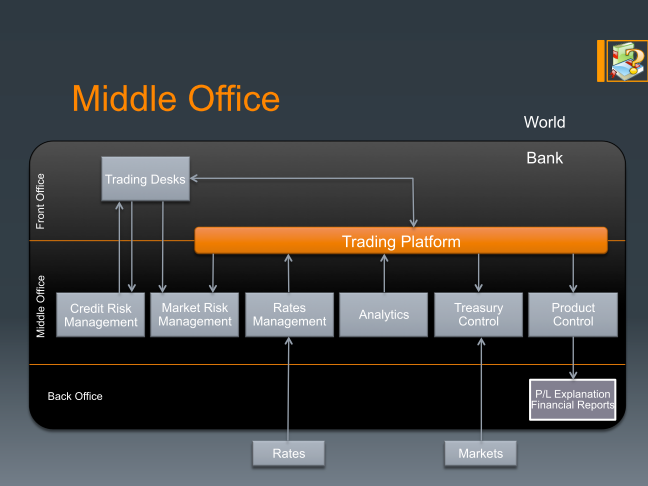The structure of Middle Office in a typical bank is depicted in the slide below. The functional units within Middle Office work hand in hand with those in Front Office to handle the inception approvals and regular processing of trades.

Middle Office is different from Front OFfice in that it has little interaction with the external world. Its primary (and perhaps only) customers are the Front Office traders and teams. As usual, most of the interactions among the teams within Middle Office and Front Office take place via the trading platform, which acts like the boundary interface between the two Offices, as shown in the slide.
In later posts, we will go through the functions of each of the business units described as a box in the picture. For now, as a general summary, we can see that the Middle Office functions are of two kinds: those related to trade approvals based on projected risks and limits, and those related to regular trade monitoring. But these functions are vast in their scope, and require large systems, data flows and an army of professionals to carry them out. They are organized under the business units with names like Product Control, Trade Control (or Treasury or Business Control) Unit, Market, Credit and Operational Risk Management), Limits Monitoring, Rates Management, Compliance and Regulatory Reporting, Analytics, Asset and Liability Management etc. Again, keep in mind that this description of Middle Office is from the perspective of quantitative development relevant to structured products trading.

